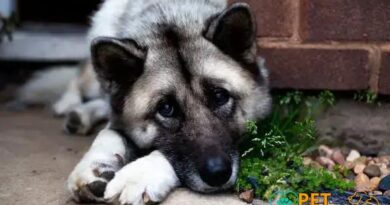What is: Young dog training tips
Understanding Young Dog Training
Training a young dog is a crucial aspect of pet ownership that sets the foundation for a well-behaved adult dog. Young dogs, typically classified as puppies up to 18 months old, are in a critical developmental stage where they are eager to learn and explore their environment. Effective training during this period can help prevent behavioral issues later in life and foster a strong bond between the dog and its owner.
Establishing a Training Routine
Creating a consistent training routine is essential for young dog training. Dogs thrive on routine, and establishing a schedule for training sessions helps them understand what is expected of them. Aim for short, engaging sessions that last around 5 to 10 minutes, as young dogs have shorter attention spans. Incorporating training into daily activities, such as feeding or walks, can also reinforce learning in a natural context.
Positive Reinforcement Techniques
Positive reinforcement is one of the most effective training methods for young dogs. This technique involves rewarding desired behaviors with treats, praise, or playtime, encouraging the dog to repeat those behaviors. It’s important to reward immediately after the desired action to help the dog make the connection. This approach not only motivates young dogs but also builds their confidence and strengthens the bond with their owner.
Socialization is Key
Socialization is a vital component of young dog training. Exposing your puppy to various environments, people, and other animals helps them develop into well-adjusted adults. Aim for controlled socialization experiences, such as puppy classes or playdates with vaccinated dogs. This exposure should be positive and gradual to prevent overwhelming the young dog, which can lead to fear or aggression later in life.
Basic Commands to Teach
Teaching basic commands is an essential part of young dog training. Start with fundamental commands such as “sit,” “stay,” “come,” and “down.” These commands not only help in managing your dog’s behavior but also enhance their safety. Use clear, consistent cues and pair them with positive reinforcement to ensure your young dog understands what you expect. Practicing these commands regularly will reinforce their learning.
Dealing with Common Behavioral Issues
Young dogs may exhibit common behavioral issues such as chewing, barking, or jumping. Addressing these behaviors early on is crucial. Redirecting their energy towards appropriate toys or activities can help mitigate destructive chewing. For excessive barking, identify the trigger and work on desensitization techniques. Consistent training and patience are key to overcoming these challenges.
Importance of Patience and Consistency
Patience and consistency are fundamental in young dog training. Young dogs may not grasp commands or desired behaviors immediately, and it’s important to remain calm and encouraging. Consistent commands and routines help reinforce learning, while patience allows the dog to progress at their own pace. Remember that every dog learns differently, and some may require more time than others.
Incorporating Play into Training
Incorporating play into training sessions can make learning enjoyable for young dogs. Use games like fetch or hide-and-seek to reinforce commands while keeping the training light-hearted. This approach not only maintains the dog’s interest but also strengthens the bond between the dog and owner. Playtime can serve as a reward for good behavior, making training a fun experience.
Seeking Professional Help
If you encounter challenges during young dog training, don’t hesitate to seek professional help. Certified dog trainers or behaviorists can provide valuable guidance tailored to your dog’s specific needs. Group classes can also offer socialization opportunities and support from other dog owners. Investing in professional training can lead to a more harmonious relationship with your young dog.
Monitoring Progress and Adjusting Techniques
Monitoring your young dog’s progress is essential to effective training. Keep track of their learning milestones and any behavioral issues that arise. Be prepared to adjust your training techniques based on their responses. If a particular method isn’t working, consider trying a different approach or consulting with a professional. Flexibility in training can lead to better outcomes and a happier, well-trained dog.



